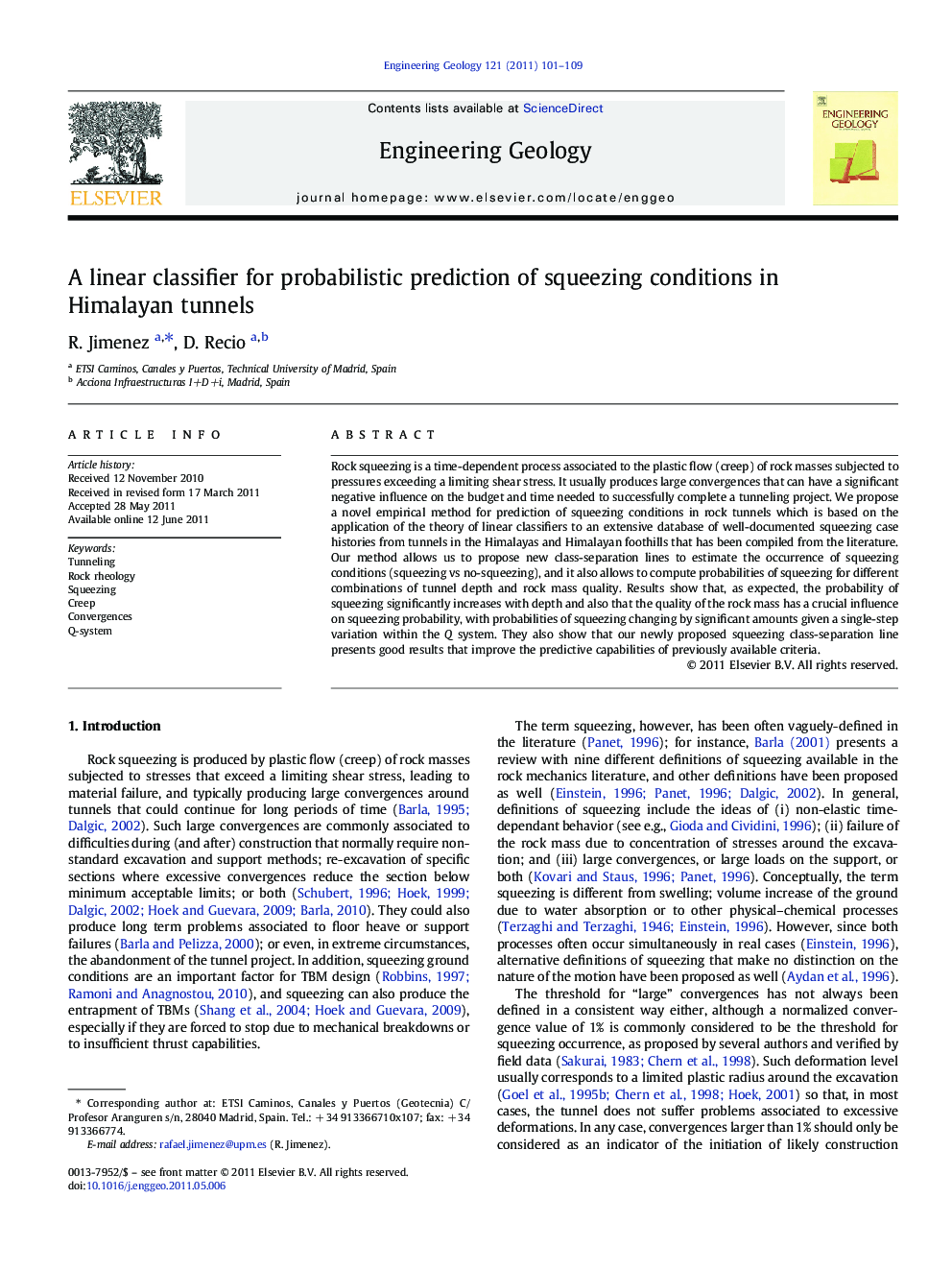| Article ID | Journal | Published Year | Pages | File Type |
|---|---|---|---|---|
| 4744165 | Engineering Geology | 2011 | 9 Pages |
Rock squeezing is a time-dependent process associated to the plastic flow (creep) of rock masses subjected to pressures exceeding a limiting shear stress. It usually produces large convergences that can have a significant negative influence on the budget and time needed to successfully complete a tunneling project. We propose a novel empirical method for prediction of squeezing conditions in rock tunnels which is based on the application of the theory of linear classifiers to an extensive database of well-documented squeezing case histories from tunnels in the Himalayas and Himalayan foothills that has been compiled from the literature. Our method allows us to propose new class-separation lines to estimate the occurrence of squeezing conditions (squeezing vs no-squeezing), and it also allows to compute probabilities of squeezing for different combinations of tunnel depth and rock mass quality. Results show that, as expected, the probability of squeezing significantly increases with depth and also that the quality of the rock mass has a crucial influence on squeezing probability, with probabilities of squeezing changing by significant amounts given a single-step variation within the Q system. They also show that our newly proposed squeezing class-separation line presents good results that improve the predictive capabilities of previously available criteria.
Research Highlights► Novel empirical method for probabilistic squeezing prediction in rock tunnels. ► Based on the theory of linear classifiers. ► Uses an extensive database of well-documented case histories. ► Results are available as a simple-to-use chart.
